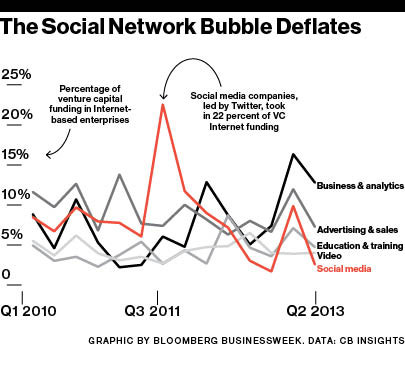- All Posts
- /
- Why Email Is the Ultimate Defense Against Digital Sharecropping

Why Email Is the Ultimate Defense Against Digital Sharecropping
News and Updates-
 Jimmy Daly
Jimmy Daly
-
Updated:Posted:
On this page
I’m sure you’ve heard this before: if it’s free, you are the product.
Think about it.
Facebook, Twitter, YouTube, Google+ and every other social network are all free because they charge advertisers to reach users. It’s a great model for them but it’s less than ideal for the marketers doing the advertising.
In the longterm, Facebook fans and Twitter followers could mean nothing: growing an audience on a platform you don’t own is dangerous business and it’s what tech writer Nicholas Carr calls digital sharecropping.
One of the fundamental economic characteristics of Web 2.0 is the distribution of production into the hands of the many and the concentration of the economic rewards into the hands of the few. It’s a sharecropping system, but the sharecroppers are generally happy because their interest lies in self-expression or socializing, not in making money, and, besides, the economic value of each of their individual contributions is trivial.
It’s only by aggregating those contributions on a massive scale – on a web scale – that the business becomes lucrative. To put it a different way, the sharecroppers operate happily in an attention economy while their overseers operate happily in a cash economy.
For marketers, it’s difficult to avoid this issue.
It’s nearly impossible to “own” your audience, as they are already “owned” by someone else. Here are some common lead-generation channels whose use could be considered digital sharecropping.
- Google: Visitors have always been anonymous and now they are encrypting search terms.
- Facebook: Pages with many fans are forced to pay to reach their own audience.
- Twitter: There is no ability to export or transfer fans into a database that can be used on other platforms.
Do you see the issue here?
In each case, the platforms are propriety. These are walled-gardens, built only to serve the stakeholders that profit off them. Social networks come and go, search engines evolve. If you put all your eggs in one basket — a basket that you don’t own — you risk losing out on years of time, energy and money spent if that platform changes its rules or shuts its doors.
There is a remedy for this problem.
Since the web was born 25 years ago, email has been the most used and most consistent online communication tool. It’s free and nearly ubiquitous, meaning that if you can obtain an email subscriber — as opposed to a fan or follower — you can keep it forever.
You can take it from one email provider to the next, save it in an Excel document and even save a local copy of your database.
Imagine if you spent a few years and few thousand dollars building an audience of 10,000 Facebook fans. Imagine if in five years, Facebook’s stock crashes and the company declares bankruptcy. It’s essentially impossible to move an audience from one platform to the other. For the huge majority of those folks, it’ll be time to say goodbye.
Email is the best defense against digital sharecropping because it’s 1) not going anywhere (the numbers prove it) and 2) it’s not owned by some corporate overload. If you aren’t collecting email address on your site, today is the day to start.
This is a more pressing issue than most people realize. If we have piqued your interest, here are the answers to a few questions about email marketing and the dangers of digital sharecropping.
1. Are you suggesting that I quit SEO and social media?
Absolutely not. What I am suggesting, however, is that you think bigger and farther down the road.
Things that are popular right now — content marketing, SEO, social media, etc. — could fade (at least in their current forms) in the future. It’s more important for businesses to think about building a database of folks who are interested in your product or service. This way, you’ll have access to those people regardless of what happens to the Facebook’s and Google’s of the world.
Last year, Bloomberg Businessweek reported that venture funding was declining for social media companies. This is important because many of these companies are not profitable and will fold without investors.

Does this mean that social media is dying? Who knows. What we do know is that it’s just one piece of a very large puzzle for marketers.
2. What if email fades away?
This is a legitimate question. People have so many ways to communicate that they might choose to use Snapchat, WhatsApp or FaceTime instead of email. Despite that, email users and email usage has shown steady growth. A report from technology research firm Radicati (PDF) indicates that the growth will continue for years to come.


Consider also that an email address is essentially our unique personal identifier online. Just about every service, including the social networks we’ve mentioned, all require an email address to register.
3. How do I start putting email to use?
Start at the very beginning. You need a contact form on your site, a few calls to action and, assuming you plan to actually email these people, you’ll need an email marketing provider.
There is a ton that goes into effective email marketing. To help answer all your questions about getting started, Vero co-founder and CEO Chris Hexton created The Ultimate Guide To Successful Email Marketing. It’s free, it’s in-depth and it’s the perfect way to say goodbye to digital sharecropping.

